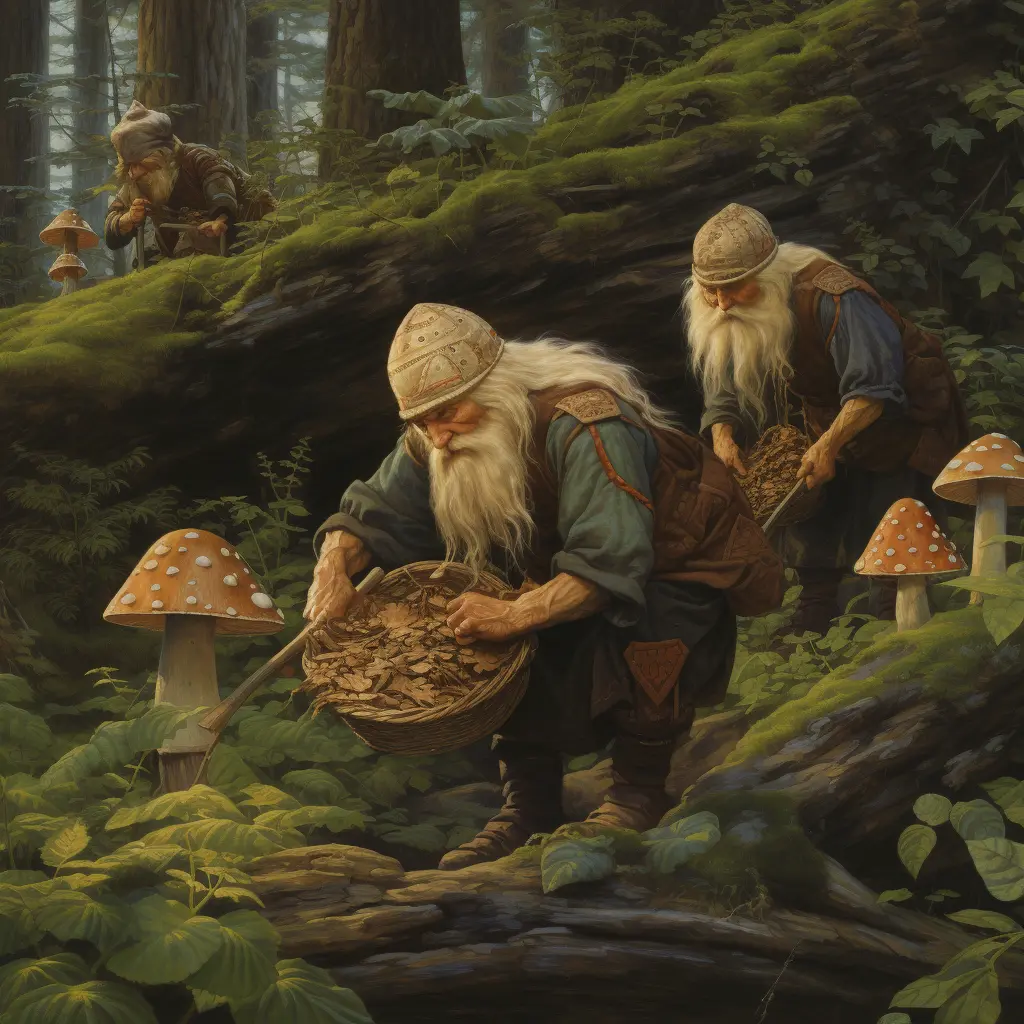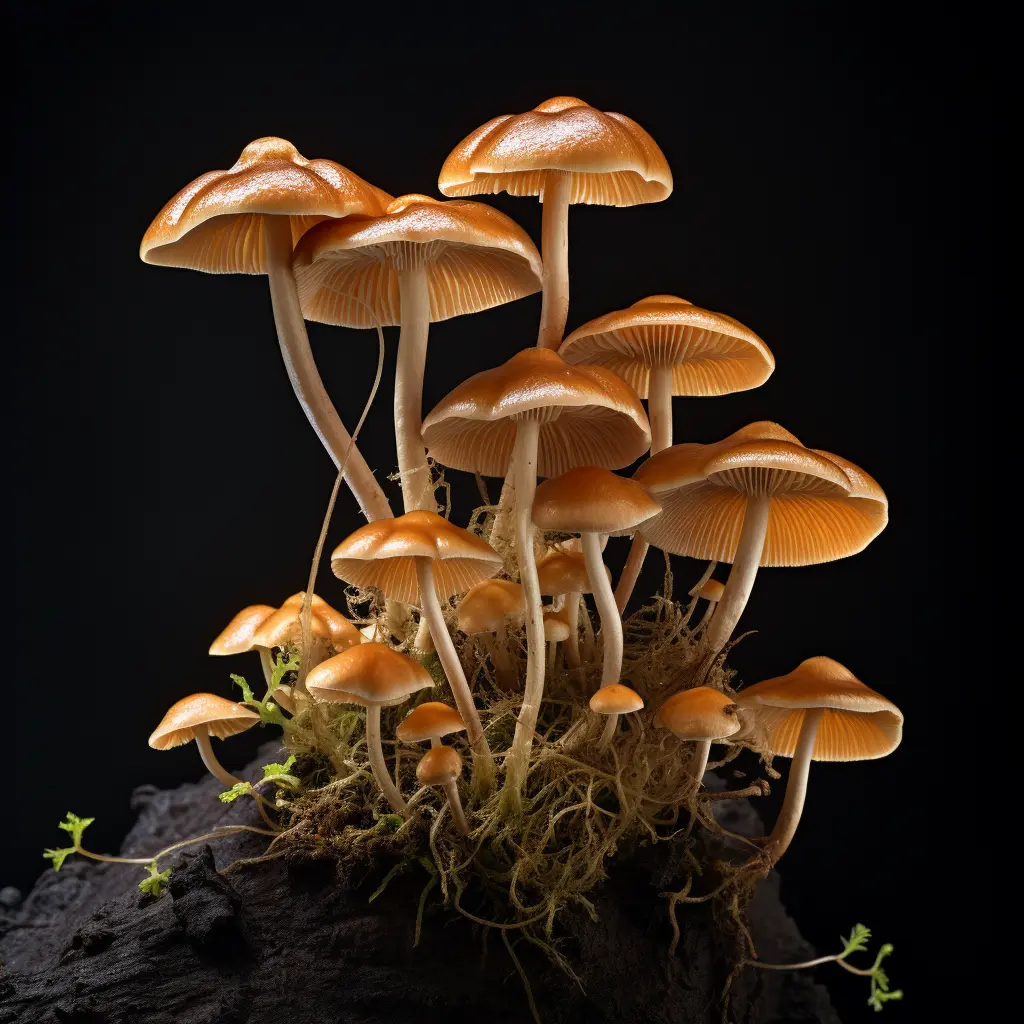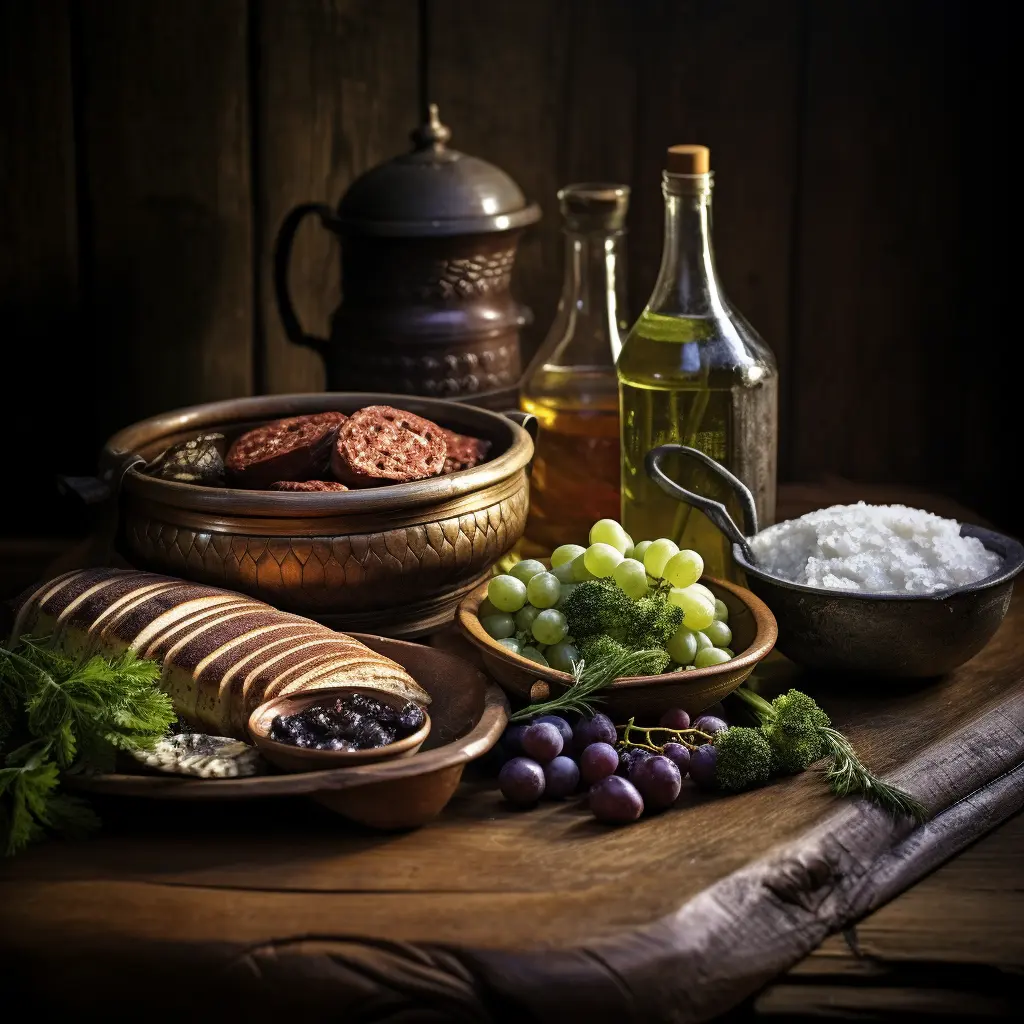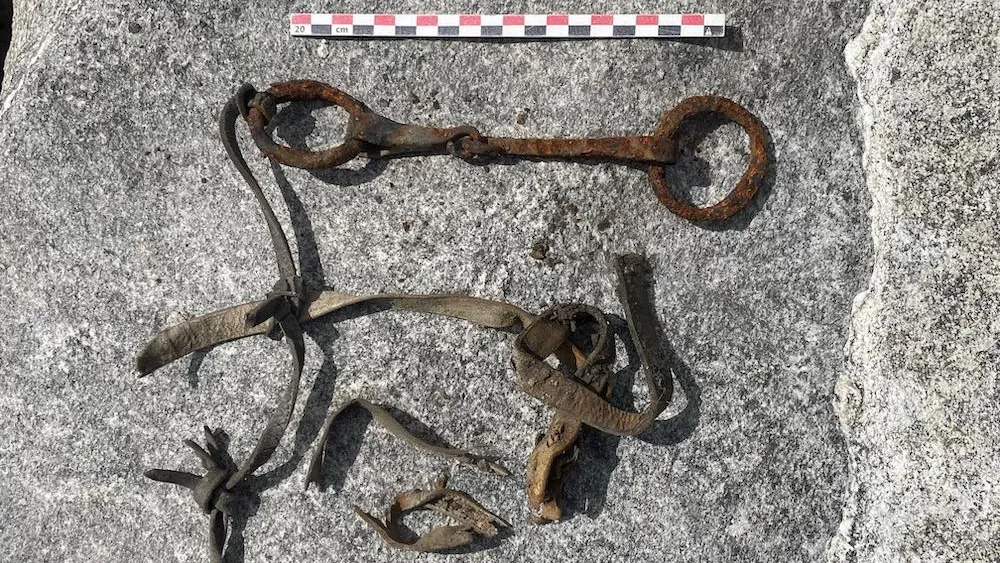
Introduction to Viking Cuisine
Role of Natural Ingredients in Viking Meals
The culinary practices of the Vikings were significantly shaped by the natural resources available in their environment. Among various ingredients, mushrooms were a common part of their diet, serving as an essential food source, especially during colder seasons. As foragers and self-reliant cultivators, they collected different species locally, which varied depending on the region. These fungi contributed not only nutritional value but also an array of flavors to their meals. Thus, mushrooms, along with other natural ingredients like berries, nuts, and wild game, played a significant role in creating the unique dining experience that characterized Viking times.
Importance of Mushrooms in Viking Diet
In the rugged and often harsh environments of Scandinavia, the indigenous populace, known as Vikings, possessed an adaptable palate, employing a diverse assortment of available ingredients. Among this diversity, mushrooms emerged as a dietary staple. Bracing the Nordic chill, mushrooms formed an integral part of their nutrition source due to their seasonal abundance and easy storage. They supplied essential nutrients, acting as a valuable food reserve particularly during winter scarcity. Some scholars even suggest a potential use in Viking rituals, signifying a cultural significance beyond sustenance. Therefore, mushrooms held a crucial role in the Viking’s culinary practice and cultural life.
The Viking Environment and the Availability of Mushrooms
Wild Mushroom Species in the Nordic Region
The Norsemen land, rich in various ecological habitats like forests, marshes, and grasslands, provided an abundance of wild edibles, including mushrooms. This biodiversity allowed the Vikings to harvest an array of fungi species, crucial to their diet. They most commonly harvested and consumed two types: the Birch Bolete and the Slippery Jack, due to their widespread occurrence in the Nordic location.
The Birch Bolete, known for its sturdiness and smooth exterior, was identified by its dark brown caps. They’re also highly nutritional—a rich source of potassium and vitamin B. Slippery Jack, on the other hand, earned their name from the distinctive slimy layer on their caps. They were often consumed due to their long shelf life and high vitamin D content. These mushrooms not only provided sustenance but also were an essential component during long maritime journeys and winter months when food resources were scarce.
Seasonal Availability and Collection of Mushrooms
Vikings utilized local fungi, leveraging their seasonal growth patterns. Autumn was a prime time, seeing a surge in edible species like puffballs and birch boletes. They foraged in forested areas, diligently hunting fungi. This practice heavily depended on weather conditions and region-specific mushroom proliferation. Thus, geography played a vital role in their fungal intake.
Types of Mushrooms Consumed by Vikings
Edible Mushroom Varieties
Covering a broad geographical region stretching from the icy shores of Scandinavia to the fertile lands of England and beyond, the Vikings were known to forage a range of fungi for their diets. Chief among these were the hearty Birch Bolete and Slippery Jack. Both are sturdy, easily identifiable, and quite common in the northern climates where Vikings thrived. The Birch Bolete is particularly rich in protein, vitamins, and minerals, so it likely supplemented the Viking’s meat-heavy diet very well.
Similarly, Slippery Jack, with its distinctive slimy cap and spongy underbelly, may have been a common sight in the cooking pots of Viking households. Another probable contender is the Wood Blewit, a bluish-purple mushroom known for its resistance to cold temperatures, making it available even during harsh Scandinavian winters. However, it’s important to note that accurate identification of these fungi is crucial, as misidentification can lead to serious health problems.
Medicinal and Hallucinogenic Mushrooms

The Norse people, known for their extensive knowledge of their natural environment, made use of a variety of fungi in their diet and for medicinal purposes. Chief among these were the species from the Psilocybe genus, commonly referred to as ‘magic mushrooms’. They supposedly consumed these for their psychotropic effects during their rituals and ceremonies to invoke a trance-like state. Another frequently used species was Piptoporus betulinus, also known as the Birch Polypore.
This mushroom was valued for its antiseptic and styptic properties and was used in wound treatment. Vikings also utilized Fomes fomentarius, or Tinder fungus, not only as a fire starter but also for its purported health benefits, including its antimicrobial properties. The Vikings’ use of mushrooms for both sustenance and medicine demonstrates their deep understanding of the natural world and how to effectively leverage it for survival and spiritual practices.
Risk and Poisonous Fungi
While the Vikings were adept at identifying edible fungi, they also faced the peril of poisonous varieties. The false morel (Gyromitra esculenta) was one such mushroom, which, although considered a delicacy by some, can be deadly if prepared incorrectly. Another danger was in mistaking toxic species like Death Cap (Amanita phalloides) or Destroying Angels (Amanita virosa) for edible ones. Given the lack of knowledge about mycotoxins during the Viking age, consumption of these could have led to serious illness or death. Thus, the task of gathering mushrooms required considerable expertise and was not without risks.
Mushroom Preparation and Consumption Methods
Preparation Techniques of Mushrooms
The turbulent seafaring Vikings, in their quest for sustenance, were known to consume a variety of mushrooms. One key aspect of their culinary practices revolved around how these mushrooms were prepared. Evidence suggests they would often forage the fungi from their surroundings and proceed to either consume them raw or cook them over open fires, depending on the type and edibility of the mushroom. Some species were sun-dried to preserve them for the harsh winter months.
The Vikings also understood the importance of boiling certain mushroom types to remove potential toxins and make them safe to eat. Mushrooms were even steeped in hot water to create a type of mushroom tea that could be consumed for its believed medicinal properties. The preparation steps were thus tailored to not just make the mushrooms palatable but also to maximize their nutritional benefits and ensure safety.
Mushroom-based Meals and Recipes
In their culinary repertoire, the Vikings incorporated a variety of mushrooms, employing a myriad of preparation and consumption methods. They primarily harvested wild mushrooms such as chanterelles, boletes, and horse mushrooms. These fungi were often dried to ensure their longevity and to facilitate their use throughout the long, harsh winters. The Vikings frequently added mushrooms to their robust stews and broths, infusing them with earthy flavors and beneficial nutrients.
Mushrooms also paired well with their largely meat-based diet, complementing dishes of fish, venison, and wild birds. Additionally, these diverse fungi found their way into fermented foods, a preservation method the Vikings mastered. They believed in the health-boosting properties of these fungi and often used them in traditional medicine, further underscoring their value. Regardless of the preparation method, mushrooms undeniably played an integral part in Viking cuisine, as reflected in their varied and nutrient-rich meals.
Impact of Viking Mushroom Consumption on Modern Nordic Cuisine
Influence on Contemporary Dishes

The gastronomic legacy of the Vikings continues to form a vital part of contemporary Nordic culinary culture, with mushrooms playing a significant role. Noteworthy dishes like the Finnish Karelian hot pot and Swedish mushroom soup often use Fomes fomentarius and Boletus edulis, fungi types frequently consumed by the Vikings.
These dishes honor the ancient tradition of foraging, a practice once vital for Viking survival, while adding an earthy depth of flavor that connects the modern palate to historical tastes. Furthermore, Nordic chefs emphasize sustainable harvesting, reflecting the Vikings’ respect for nature and ensuring that these mushroom varieties continue to thrive in Scandinavian forests.
Viking Mushroom Foraging Traditions Today(100 words)
Modern Nordic cuisine is heavily influenced by the Vikings’ fondness for mushrooms, many of which continue to be a key ingredient in various dishes today. Scandinavia especially presents an array of diverse fungi, following an annual tradition known as ‘svampejagt’ in Denmark and ‘sienestys’ in Finland; sort of a mushroom-hunting festival. During these festivals, locals investigate forests and fields for mushrooms, taking after their Viking ancestors. Among the most common types harvested are the penny bun, commonly known as porcini, and the chanterelle, confirmed to be a Viking favorite. This foraging tradition is integral to maintaining links to the rich Viking heritage.
Conclusion: Vikings and their Mushroom Lore
In conclusion, the Vikings’ relationship with mushrooms was a profound aspect of their diet and culture. Their skilled foraging and utilization of a wide range of fungi not only provided necessary sustenance but also played a vital role in their medicinal practices and spiritual rituals. From the commonly consumed Birch Bolete and Slippery Jack to the ritually significant ‘magic mushrooms’, Vikings harnessed the nutritional and medicinal properties of these natural resources with remarkable expertise. The dangers of poisonous varieties underscore the depth of their knowledge and the importance of accurate identification.
The methods they used for preparing and incorporating mushrooms into their diet were practical and ingenious, adapting to the limitations and opportunities of their environment. Mushrooms were not only a source of food but also a means of survival, especially during the harsh Nordic winters. Their culinary practices, including drying and fermenting mushrooms for preservation, show a deep understanding of their natural resources.
The legacy of the Vikings continues to influence modern Nordic cuisine, with mushroom foraging remaining a popular tradition and an integral part of the region’s culinary identity. Today’s Nordic dishes that feature mushrooms echo the Vikings’ reliance on and respect for these versatile fungi, maintaining a tangible link to the past. The Viking’s adept use of mushrooms showcases their remarkable adaptability and profound connection to their natural environment, leaving an enduring impact on our understanding of historical diets and cultural practices.



